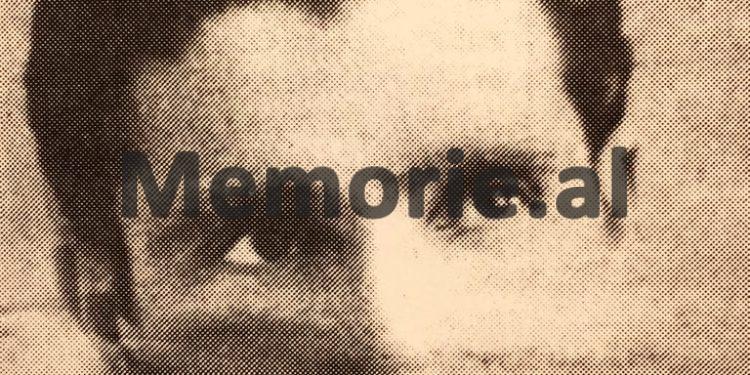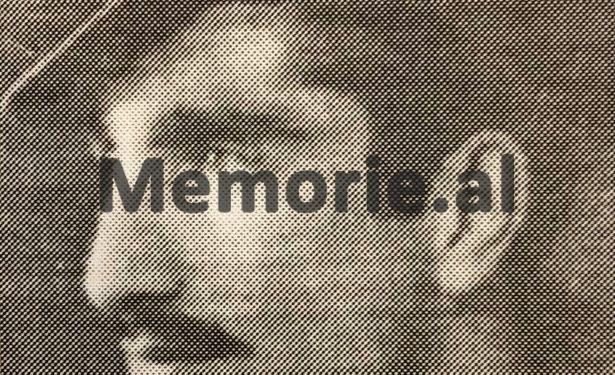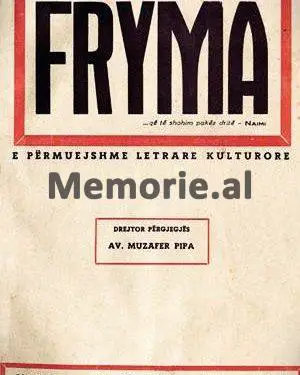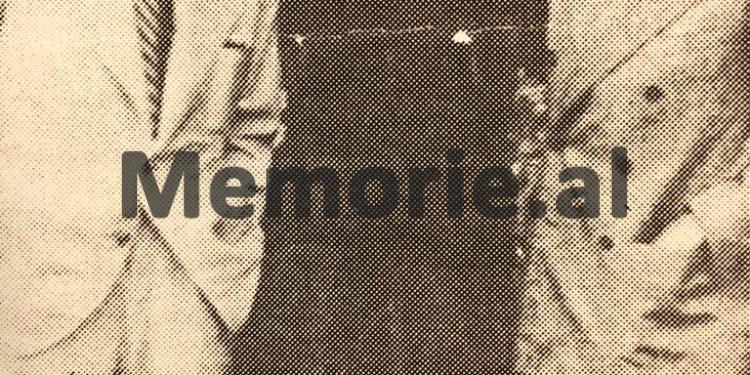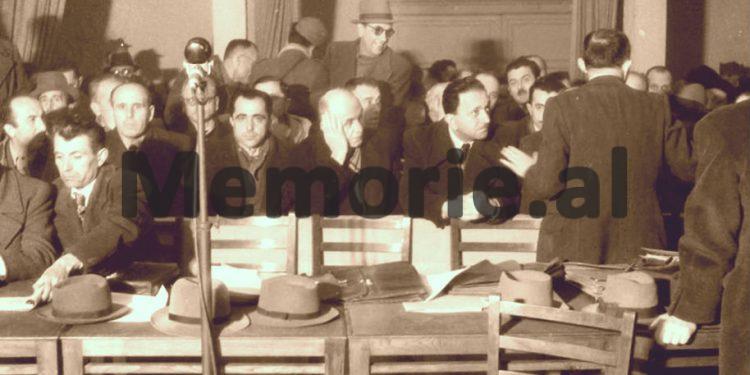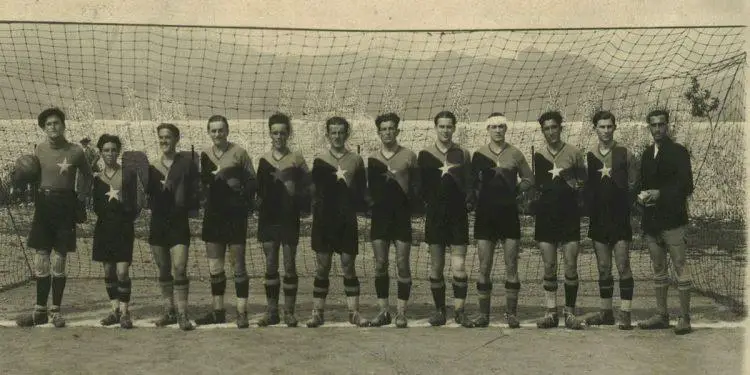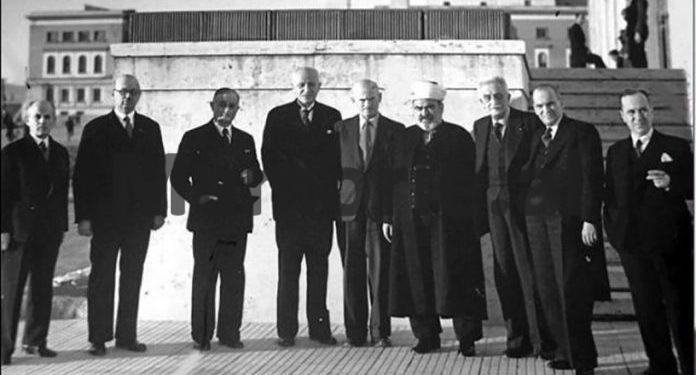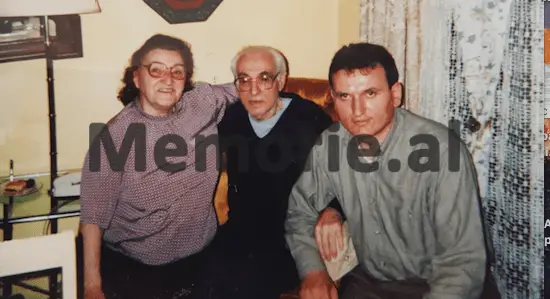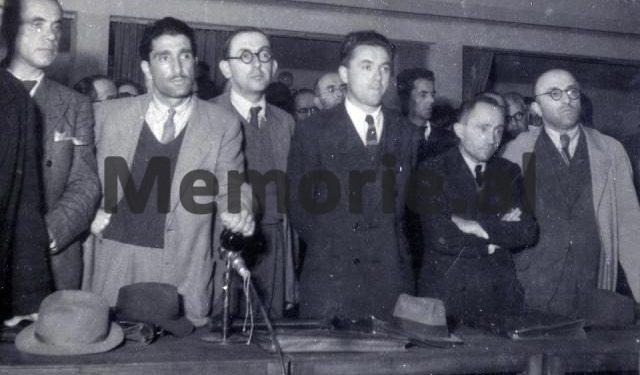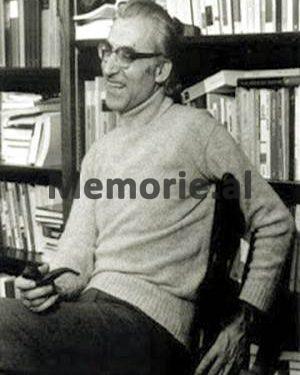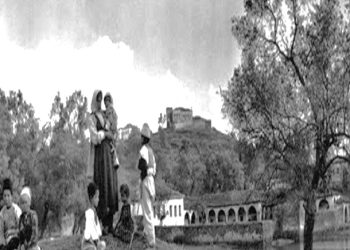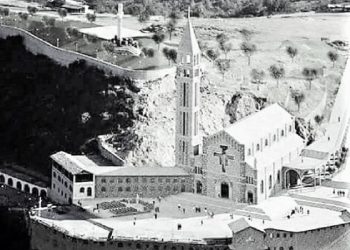Dashnor Kaloçi
Memorie.al publishes the unknown story of two brothers, Myzafer and Arshi Pipa, who after studying in Florence and Padua, Italy during the Zog Monarchy, graduating with a degree in Philosophy and Law, returned home in January. 1944, they opened the magazine “Fryma” where some of the most famous names of the intellectual elite of that time were engaged with their writings, such as Dr. Gaspër Pali, Muhamet Bala, Prof. Filip Ndocaj, Jolanda Kodra, Qemal Draçini, Fadil Podgorica, Agron Libohova, etc. The short story of that magazine that came out in only eight issues, where the writings and editorials of Lawyer Myzafer Pipë stood out, where he raised his voice for the role and place that Albanian women should occupy in Albanian letters and journalism of that time, mentioning the names of known as Musine Kokalari, Ikbal Çika, Mila Gjokoreci, Hava Toska-Shehu, Jolanda Kodra, etc., to the point where he accused Albanian ministers and politicians, labeling them as “swindlers and swindlers” who in addition to palaces and estates that they had in Tirana, Rome, etc., had not done any other “deed”, as they looked only at themselves and not at the common good!
In addition to the large number of newspapers and magazines that had started to be published in Albania, mainly from the beginning of the 1930s, another monthly literary-cultural was added, which began to be published in the city of Shkodra in January. of 1944. This magazine was titled “Spirit” and its leaders were two brothers, Myzafer and Arshi Pipa, originally from Libohova in Gjirokastra, but their family had settled in the city of Shkodra many years earlier. Myzaferi, who was also the magazine’s editor-in-chief, studied and graduated in Law in Padua, Italy in 1940. Arshiu also studied in Italy in the city of Florence and graduated in Philosophy. Myzaferi, who was also the older brother, did not have much experience in the field of journalism and publishing, since after graduating from university in Italy, he was only involved in Jurisprudence, serving as a judge and lawyer. But unlike him, his brother Arshiu had shown his inclinations in the field of letters since high school, publishing prose and poetry in the literary press of that time. Although Myzaferi was not well known in the field of letters or journalism, he had a great advantage in the path he had embarked on, being a connoisseur of several foreign languages and with deep baggage and knowledge in the legal and socio-political fields… He also studied a lot and had knowledge in the field of fine arts, such as music and literature. Their family’s library was one of the richest in Shkodra, which the two Pipa brothers inherited from their father, the well-known lawyer Mustafa Pipa, who had graduated from Istanbul. Although this magazine was conceived by its leaders as literary-cultural, its content included various places and writings of a wider space, from different fields such as archeology, history, philosophy, geography, economics, politics, etc…
What did the “Fryma” mean?
In the first edition of the magazine “Fryma” that was published in January 1944, among others, Myzaferi wrote: “There were various circumstances that delayed this enterprise designed in time. Literary and cultural maturity, especially here in Shkodra, required decomposition. A new spirit and enthusiasm were felt everywhere. Something new was wanted but also accurate and serious. Something progressive towards all branches of culture required literature but also art and science. Our work started with the will and good faith, although contrary to spiritual upheavals and the course of universal events, when we see that it is fair and aware and is one of the issues that are necessary and useful for the time to come, no it has been ours but on the contrary, it has encouraged us more for work desire. We will treat different subjects and we will have special sections for economic, legal, political, philosophical sciences, etc. But they will give more importance to the literature of works of art because these are the proof documents of the progress of a country “, wrote Myzaferi in the closing of the first edition of the magazine” Fryma “. The first issue of this magazine, which was published in January 1944 (it had 50 pages), after the editorial of its director Myzafer Pipë, had about 11 other articles, not including some short poems, etc.
Topics and pens he writes in “Fryma”
The authors of these writings were well-known names for the time in the field of letters, such as Dr. Gaspër Pali, with: “Fjorentine dreams”, Muhamet Bala with: “My teacher”, Prof. Filip Ndocaj, with: “Letratyra, ç’asht e si must be”, Qemal Draçini with: “një grishje”, Jolanda Kodra with: “Kreshnikimi Kreshnik i Shkodrës”, as well as the poems of Ndre Mjedë. Also writing in it was Fadil Podgorica, author of the article: “Some motifs of Albanian folk poetry”, Dr. A. Ymerati with “Philosophy”, Agron Libohova, with the novel “At the martini well”, and Skënder Anamali with: “Archaeological studies and excavations in Albania”. As can be seen in the course material, in the first issue, the topics covered there has a wide range in the field of journalism with endless spaces for everyone. From the content of this amateur, Qemal Draçini’s article, entitled “A tear”, stands out, where the author raises the issue of the emancipation of Albanian women. In these writings, Draçini strives by raising his voice for the weak position of the Albanian woman in the field of letters, as well as the place that she must occupy in various literary creations and publications.
The role and place of Albanian women in creativity
Regarding this, among other things, Draçini writes: “Among us, we cannot even talk about the degree of mental activity of women, for the simple reason that this mental work almost does not exist. There has been a lot of noise here that you get up on your own and weak, but the screams go out, you didn’t have to follow. All those who have read in the past, in our time, definitely remember the names of Colombia, Muza, Musine Kokalari, Ikbal Çika, Mila Gjokoreci, Lux Secreta, and finally those of Postribsja, Vjollca e Skanderbeut, Hava Toska – Shehu and Jolanda Kodra. They are known as the fingertips. And yet we are not without a class of educated women. Only a relatively small number of them have raised their voices to the heights of publication. Why this? ” After the publication of the first issue, the magazine “Fryma” continued to appear monthly and in seven other issues, until July-August of the same year, (1944) when it was closed. From the first to the eighth issue, almost a certain statuette was preserved, both in the form of the magazine and in its content, where literary translations were added to the pages, both in prose and poetry, where literature dominated. European with Goethe, (“Panorama of German Lyrics”), etc. But in the following issues, there was a qualitative increase in the content of the writings, which was influenced by the addition of the names of collaborators who began to write there, who were firms tested in the Albanian journalism of the time, such as Dr. Besim Qorri, Hamit Kokalari, Minella Karajani, Av. Fejzi Dobi, Astrit Delvina, Muzafer Xhaxhiu, Dr. Xhevdet Loloçi, etc.
Why was “Fryma” closed?
As we said above, “Fryma” magazine, unfortunately, had a lifespan of only eight issues. Its last issue came out in July-August 1944. But what were the real reasons for closing the magazine? They had to do with its content, as in its latest issue, its lawyer, Myzafer Pipa, wrote an editorial entitled “Consciousness or Crime”, in which it leveled harsh accusations against the government in power. The accusations start at the top of the article, where the author says: “In the heart of Europe, as the key to the Adriatic, Albania, as an inter-Balkan state, is fatally known to be far behind other Western countries. Well, our Albania should be a model state, since it does not lack natural influences and economic opportunities for the reformation of the country, as well as the intellectual movement, especially the last 30 years to keep my living and cultural level alive and thus to benefit Albania. true and good, with worthy and free Albanians ”. At the beginning of this article, Pipa talks in principle about the situation in Albania, where the blame for her backwardness lies with the centuries-old enemies, Turks, and Salavans, Latins and Neo-Latin, about whom he says: “In this way, we remember that we are justified, and we count still in place ”. Further in this article, lawyer Pipa openly accuses the corrupt government officials, whom he calls “swindlers and swindlers, who look to fix only themselves and do not mind the common good”! Regarding this, Pipa says: “Who has been the Minister so far to at least put a stone in the foundation of this temple, which is being built with the blood and sweat of these people? Where are the documentary and monumental works of these leaders and leaders of the masses, apart from the palaces and private estates in Tirana, Rome and elsewhere ”?! Further in that article, Pipa analyzes the work of some ministries, which he accuses of being corrupt and closes his editorial, saying: “And the boat must have not only strong engines but also skilled and sacrificial captains. Otherwise, she will drown with all the people inside. ” It was this editorial that forced the then government to take an extreme decision, deporting Myzafer Pipa to the Pristina Camp. After his release from exile, lawyer Pipa did not continue to publish the magazine because he wandered the mountains until the end of the war in November 1944 when the Communists came to power. In February-March 1945, the well-known lawyer and publicist, Myzafer Pipa, undertook to be the defense attorney of several defendants in the Special Court, where more than 60 people, former ministers, were accused of being “enemies and criminals of the people.” prime ministers, deputies, members of the regency and other senior officials of the Albanian governments from that of Ismail Qemali to the German occupation of the country. A year later, in 1946, lawyer Myzafer Pipa was arrested in the city of Shkodra, accused of being a “participant in the Postriba Movement”, and he died in torture in one of the city’s prison cells before leaving. trial.
Who was Myzafer Pipa?
Myzaferi was born in Istanbul in 1914 and was the first of two sons and four daughters to marry Mustafa Pipa (from his two marriages) who was educated and graduated in Law in Istanbul. Since the banquets of the classical gymnasium of Shkodra, Myzaferi, differed from his friends in behavior and lessons. He was also activated as a footballer in the team of this city “Vllaznija” along with two well-known names, Riza Lushta and Naim Kryeziu, who would later make a great name in the elite of Italian football where they were cativated for several championships… After graduating from high school, his father, Mustafai, wanting him to follow the family tradition, sent Myzafer to Italy to study law. This became a reality in September 1936, and he left Shkodra and began teaching at the University of Padua, where shortly before him, Abaz Ermenji, Jakov Milaj, and Nikola Shurbani had studied. In 1940, when Myzaferi was still a student in his final year of college, he was arrested by Italian authorities for anti-fascist attitudes, as in a bar in the city center, which was frequented by Albanian students, he spoke to them about his intentions. of the fascist occupation of Albania. At the same time, they sang the song “Vlora Vlora”, which reminded Italians of the 1920 defeat in Vlora. After his arrest, he appeared in court and was sentenced to prison on the island of Ventotene, where many other Albanians were also convicted at the time, such as Aabaz Ermenji, Selman Riza, Safet Butka, Abdurrahim Kreshpani, Zef Mala, Emin Duraku. Masar Shehu, et al. After a year, in the late 1940s, he was released from the camp and returned to the University of Padua, where he defended his high school diploma. He then returned to Shkodra, where the then Albanian government appointed him as a first-instance judge in the town of Tuz. Here he did not work for more than three months, after resigning and working as a lawyer in Shkodra, in the studio of his father Mustafa. In 1943, the Pipa family moved to Tirana, where Myzaferi worked as a lawyer, defending many of the anti-fascist youth of the time who had been arrested by the Italians. Although he was a declared democrat and anti-fascist, he did not join any political group or formation of the time. In January 1944, Myzaferi, together with his brother Arshiu, published the magazine “Fryma”, which was published in 8 issues and then closed by the Albanian government of that time. After the end of the war and the coming to power of the communists, Myzaferi continued his advocacy and in the “Special Court” held in February-March 1945, he defended Tahsim Bishqemi, Abedin Xhiku, Anton Kosmaçi, and Manush Peshkëpinë. who had been declared and accused of being “enemies of the people and war criminals.” In 1946 Myzaferi was arrested after being accused of participating in the Postriba Uprising. After numerous tortures, he was left dead in the cells of the investigation in the Shkodra Branch of the Interior, where it is said that after being tortured with a hot iron, he was later shot in the head, justifying that he tried to escape… Even today, the family still does not know where his remains are. On June 27, 2008, in the city of Shkodra was organized a meeting at the Theater “Migjeni” dedicated to lawyer Myzafer Pipë, where he was awarded the title “Honorary Citizen”. While President Bamiri Topi awarded the Order “Honor of the Nation” (after his death), with the motivation: democracy, opposing until the sacrifice the establishment of dictatorship in Albania ”./Memorie.al




